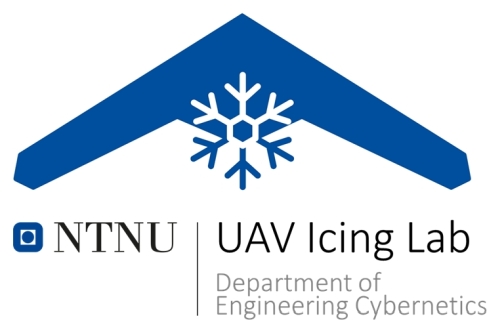**NEW PUBLICATION** Atmospheric in-flight icing is a significant threat for all aircraft, in particular for unmanned aerial vehicles (UAVs). Hence, most UAVs require a mitigation plan in order to fly safely in icing conditions, at least in the more severe icing conditions. One way of protecting the aircraft against the negative influences of icing is the use of ice protection systems (IPS). Most research on IPS for UAV wings has been with electrothermal IPS, i.e., systems that heat the protected area electrically above the freezing temperature.
What is known and what isn’t
Previous studies (How much energy is required to prevent ice on UAVs? and Efficient ice protection systems – Timing is everything) found that the operation of the electrothermal IPS in de-icing mode required less energy than the operation as anti-icing system. De-icing systems allow some ice to accumulate before the ice is removed, while anti-icing systems prevent ice to accumulate on the protected surfaces at any time. Additionally, previous studies showed that the usage of a parting strip increases the energy efficiency of the IPS. The parting strip is a continuously heated element that is located at the leading edge of the wing and divides the ice shape into two parts. As can be seen in the figure above, this allows the aerodynamic forces to push the ice from the wing once the primary and secondary zones have melted a sufficient layer of ice.

Several studies exist that aimed to optimize the energy used on thermal de-icing IPS. However, only few studies also considered the aerodynamic influence of intercycle ice. Intercycle ice is the ice that is allowed to accrete before the de-icing is started. The studies that also considered the intercycle ice shapes typically only investigated the ice thickness of the intercycle ice. To our knowledge, no study exists that quantifies the energy required for an IPS and the energy required to generate enough thrust for the UAV to continue its flight in icing conditions. This gap is intended to be filled with the new publication.
Energy efficiency – new results
For this study, the required IPS energy was determined experimentally from icing wind tunnel tests. The intercycle ice shapes and the drag increase they cause were simulated using the icing CFD code ANSYS FENSAP-ICE. An exemplary result is shown below for the flight of a UAV in icing conditions at −2 °C with different intercycle times and allows for multiple findings. First, the required energy to compensate for intercycle drag is smaller than the energy required for an IPS. As a result, parting strip de-icing remains more energy-efficient than conventional de-icing and anti-icing, even when considering the intercycle drag. Second, the added intercycle drag can cause shorter intercycle times to be more energy-efficient than longer intercycle times. Third, flying without an IPS can be the most energy-efficient setting when only looking at the energy required to fly through a specified cloud.

So should UAVs fly without IPS?
While the results of the study indicate that no IPS might be the most energy-efficient method of flying in icing conditions, this does not mean that it is the best option for a UAV to not have an IPS at all. First, the study only compares the energy required for the flight through a specified cloud. If the UAV was not equipped with an IPS, it would continue to fly with the reduced aerodynamics caused by the ice accretion even after exiting icing conditions. Thus, when comparing an entire flight, flying with an IPS is likely to be more energy-efficient than flying without an IPS. Second, the quality of an IPS does not only depend on its energy efficiency. Ice accretions on the wing also reduce the stall angle and increase the risk of accidents in flight situations with larger angles of attack, e.g., during the approach. Furthermore, ice accretions are likely to reduce the maneuverability and stability of the aircraft. Hence, the perfect usage of an IPS is likely dictated by the amount of ice that can be on the wing of an aircraft without risking the aircraft to become unstable.
The new publication presents valuable information on the energy efficiency of IPS for the wings of UAVs. This knowledge helps to develop better IPS and to implement IPS settings that optimize the energy need. The results show that longer intercycle times are in general more energy-efficient but the influence of intercycle ice on the aircraft’s stability was neglected in this study. Hence, for a further optimization of the IPS, investigating the influence of intercycle ice shapes on the stability and maneuverability of aircraft is required.
Reference: Wallisch, J. and Hann, R., “UAV Icing: Intercycle Ice Effects on Aerodynamic Performance,” SAE Technical Paper 2023-01-1400, 2023, https://doi.org/10.4271/2023-01-1400.
Text: Joachim Wallisch
Title image: Microsoft Bing Image Creater

